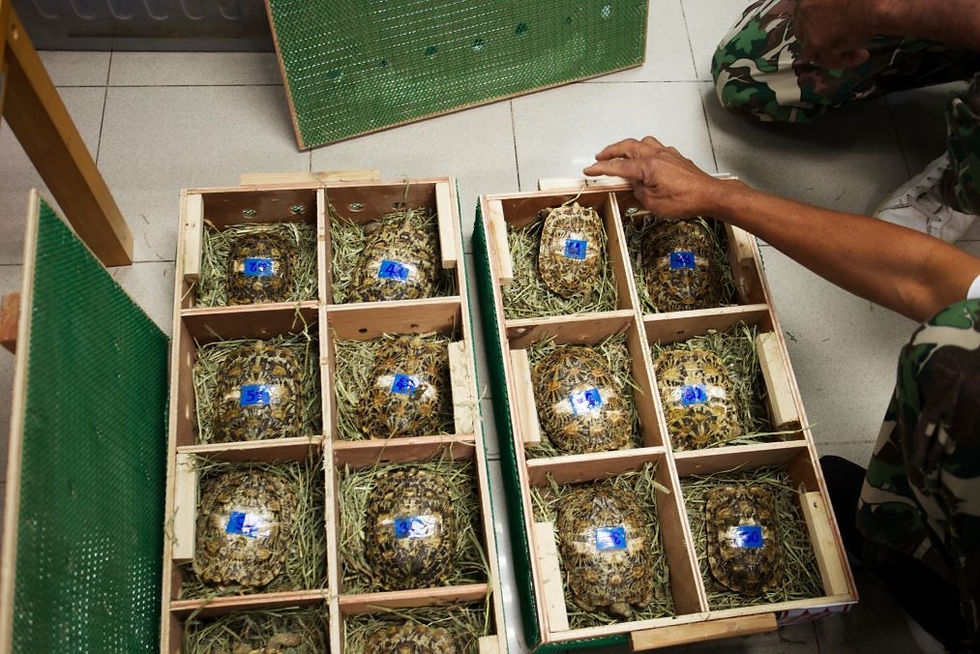Edu the Baby Giraffe: A Personal Encounter and a Call for Conservation
- Brenda Karimi
- Jan 1
- 3 min read
Updated: Feb 28
Last Sunday, I had the unforgettable experience of visiting the Nairobi Safari Walk, a conservation facility featuring a raised wooden boardwalk that allows visitors to explore three simulated ecosystems: wetlands, savannah, and forest.
One of the most memorable encounters was with a baby giraffe named Edu. Unlike the other animals, Edu wandered freely with his caregiver. We crossed paths as Edu eagerly got a bottle of milk, his lanky legs and curious gaze winning the hearts of everyone around him.

Edu's playful personality amassed a crowd of admirers, and people couldn’t resist interacting with him and taking photos. It was a surreal experience to stand so close to such a beautiful creature.
Facts about Giraffes
Giraffes are the world's tallest land mammals, with males reaching up to 18 feet in height. Their long necks, decorated with different patterns, provide natural camouflage in the savannah. Despite their massive size, giraffes move with grace.
Their food is mostly leaves, and they prefer acacia trees. A giraffe's long tongue, which can reach 18 inches, is equipped for removing leaves from thorny branches. They rarely need to drink water, getting most of their hydration from the foliage they ingest.
At birth, giraffe calves endure a 1.5-meter drop but are nearly 2 meters tall, allowing them to feed immediately. They rely on their mothers' milk for the first year but begin eating leaves around the age of four months.
Male calves leave their mothers around 15 months to join bachelor herds, while female calves usually remain with their mothers' herds or nearby. Females reach maturity and are ready to mate by the age of four, with a gestation period lasting 15 months. Giraffes are social creatures, living in loose herds throughout their lives.
Giraffes' long necks allow them to access leaves that other animals cannot reach, playing an important role in maintaining the balance of their ecosystems. Their necks are also used in "necking", a ritualized combat between males to establish dominance.
Giraffes’ horns, called ossicones, are made of ossified cartilage and covered in skin. Unique spot patterns serve as camouflage and aid in thermoregulation, with blood vessels beneath the spots assisting in the release of body heat. To indicate danger, giraffes mostly use visual cues such as eye placement and glances, as well as infrasonic sounds that are too low for humans to hear.
The Rothschild’s Giraffe: A Race Against Extinction
Edu’s story takes on a deeper significance when considering the plight of his relatives, the endangered Rothschild’s giraffe. This subspecies, named after zoologist Lord Walter Rothschild, is among the most distinctive and rare. Rothschild's giraffes, unlike other giraffes, have no markings below the knees, giving them the appearance of wearing white socks.

With less than 2,000 of them surviving in the wild, the Rothschild's giraffe is under serious threat from habitat destruction, human-wildlife conflict, and poaching. Their natural habitats, savannahs and grasslands, are quickly being transformed into agricultural land, leaving them with fewer places to roam.
A symbol of hope
Edu's presence at the Nairobi Safari Walk demonstrates the importance of wildlife conservation. Animals such as Edu act as ambassadors, raising awareness about their species and the critical need for conservation. Watching him connect with visitors made me realize how such interactions might encourage people to care strongly about the natural environment.
The conservation facility plays an important role in wildlife conservation by providing a space where people can interact with wildlife, which helps cultivate a sense of responsibility toward nature. It also serves as a platform for educating the public about endangered species, ecosystem balance, and the impact of human activity on the environment. For more information, please visit the Kenya Wildlife Service website.
How to help
To help giraffes, consider spreading awareness within your community and advocating for policies that protect natural habitats, visiting or volunteering at facilities like the Nairobi Safari Walk and the Nairobi Animal Orphanage, as they heavily rely on visitors and donations to continue their work.
A Personal Takeaway
Meeting Edu was not only an exciting experience but also a powerful reminder of the fragility and resilience of wildlife. Watching him gave me a renewed sense of responsibility to protect creatures like him and their natural homes. Edu's story serves as a call to action. By working together, we can ensure that giraffes continue to grace our planet for generations to come.



Comments